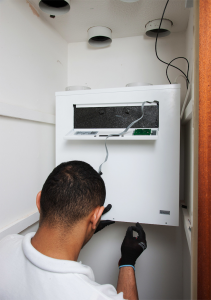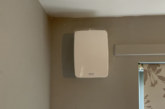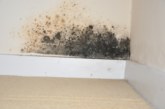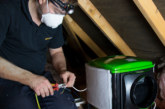
Air pollution is becoming a key talking point in the media, with the Government exploring measures to tackle the detrimental impact of poor air quality on health and wellbeing. Lee Stones, Category Manager for Xpelair, discusses research carried out on the impact of poor air in densely populated areas.
There are growing health fears regarding the impact of outdoor air quality. This is particularly prevalent in areas with more high-rise properties — usually based in urban locations with more pollution. However, the effect of the outside environment on indoor air quality is often overlooked, despite the fact that the air flowing through properties not only affects an individual’s health but can also harm the fabric of a building.
Ventilation is key when ensuring good indoor air quality. To achieve natural ventilation, the obvious solution is to open doors and windows to ensure regular airflow throughout a property. However, with security being a key priority in local authority buildings, natural ventilation solutions come with risks. In high-rise buildings, window openings may be restricted, whereas in highly populated areas people may not feel comfortable leaving their property unsecured. Coupled with additional noise and pollution, these factors can be detrimental to an individual’s health and wellbeing.
Poor air quality can come from everyday objects in the home, such as furniture, carpets, paints, varnishes and cleaning products, which can emit volatile organic compounds (VOCs). Further risk factors include warmth and moisture that can spread within a property, especially when there isn’t the correct ventilation.
Seasonal factors can also have an impact on natural ventilation. During winter months, tenants understandably do all they can to keep warmth inside, leaving little way for natural airflow. The warmer months also cause problems: according to government figures, overheating causes 2,000 deaths each year. Research by Glen Dimplex has shown that 83% of Londoners have suffered from uncomfortably hot homes during the summer, with only 8% taking measures to rectify this.

Ventilation issues
The way homes are currently being built is adding to this problem. With an increasing need for more housing, building denser flats is taking priority over other types of dwellings. This is concerning because although all types of homes can experience overheating, flats tend to suffer to a much greater degree when temperatures rise. Flats are unable to have the same amount of airflow as a house.
It’s not just new-builds that are suffering from ventilation issues: assessments into fire risks in 436 social housing blocks found that many did not have sufficient ventilation in the homes or staircases. To improve the air quality in properties, mechanical ventilation is key. Manufacturers are now offering sophisticated and tailored solutions, and extraction systems such as wall, roof, glass and panel fans can remove the bad air that builds up inside a property.
However, residents often complain about the noise of mechanical ventilation. This can result in fans not being used properly or, even worse, being disconnected. This can be especially difficult when property owners or local authorities do not have access or awareness of this, leading to the build up of moisture and mould.
Solutions such as Xpelair’s Simply Silent Contour Fan, which has been independently tested to be one of the quietest bathroom fans on the market, will help ensure ventilation does not become an inconvenience. The range features Ghost Air Movement Technology. Fan noise comes from both the motor and the movement of air. To combat this, Ghost Air Movement Technology uses long-life silent running motors and precision engineered components to avoid mechanical noise, whilst advanced airflow management eliminates irregular airflow paths and turbulence. As a result, Simply Silent has recorded a sound pressure level of just 16dBA at 15l/s.
Heat recovery
A solution for smaller homes where insulation levels are high is Mechanical Ventilation with Heat Recovery (MVHR). Available as a centralised, whole-house system or single room units, this technology extracts moist, stale air from inside the property and replaces it with fresh, incoming air. Crucially, it uses heat from the outgoing air to warm the incoming air, and high-efficiency systems can warm air up to more than 90% of the extracted air temperature.
Xpelair’s Natural Air 180 is an MVRH system which provides an efficient and flexible approach to whole house ventilation. The unit has been purpose designed for consistent performance and offers a high level of flexibility. From NOX filtration for optimised safety to PIR sensor activity for enhanced efficiency and cold-climate pre-heating, each unit can be customised to meet user requirements.
With air pollution still playing a detrimental role in our living environment, there is a long way to go to improve the quality of air both indoors and outdoors. Through innovation and improved performance, manufacturers can continue to support and provide access to a range of highly efficient ventilation solutions to advance airflow through properties.








